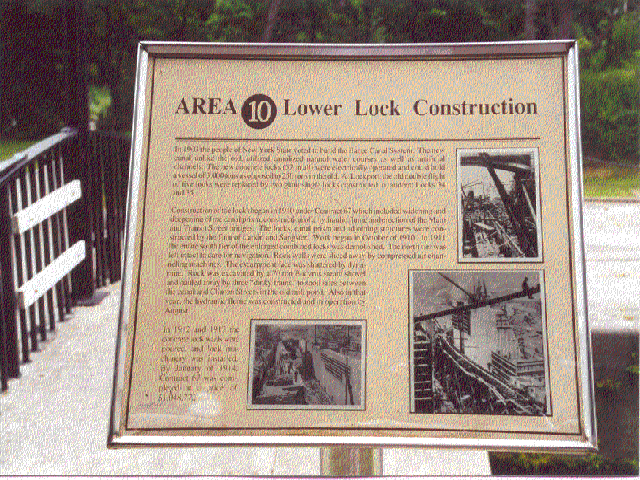

| In 1903 the people of New York State voted to build the Barge Canal System. The new canal unlike the old, utilized canalized natural water courses as well as artificial channels. The new concrete locks (57 in all) were electrically operated and could hold a vessel of 3,000 tons as opposed to 250 tons in the old. At Lockport, the old double flight of five locks were replaced by two giant single locks constructed in tandem: Locks 34 and 35. |
| Construction of the locks began in 1910 under Contract 67 which included widening and deepening of the canal prism, construction of a hydrualic flume and erection of the Main and Transit Street bridges. The locks, canal prism and adjoining structures were constructed by the firm of Larken and Sangster. Work begain in October of 1910. In 1911 the entire south tier of the enlarged combined locks was demolished. The north tier was left intact to care for navigation. Rock walls were sliced away by compressed air channeling machines. The escarpment face was shattered by dynamite. Rock was excavated by a 70 ton Bucyrus steam shovel and hauled away by three "dinky trains" to spoil sites between the canal and Clinton Streets in the old mill pond. Also in that year, the hydraulic flume was constructed and in operation by August. |
| In 1912 and 1913 the concrete lock walls were poured, and lock machinery was installed. By January of 1914, Contract 67 was completed at the price of $1,048,772. |